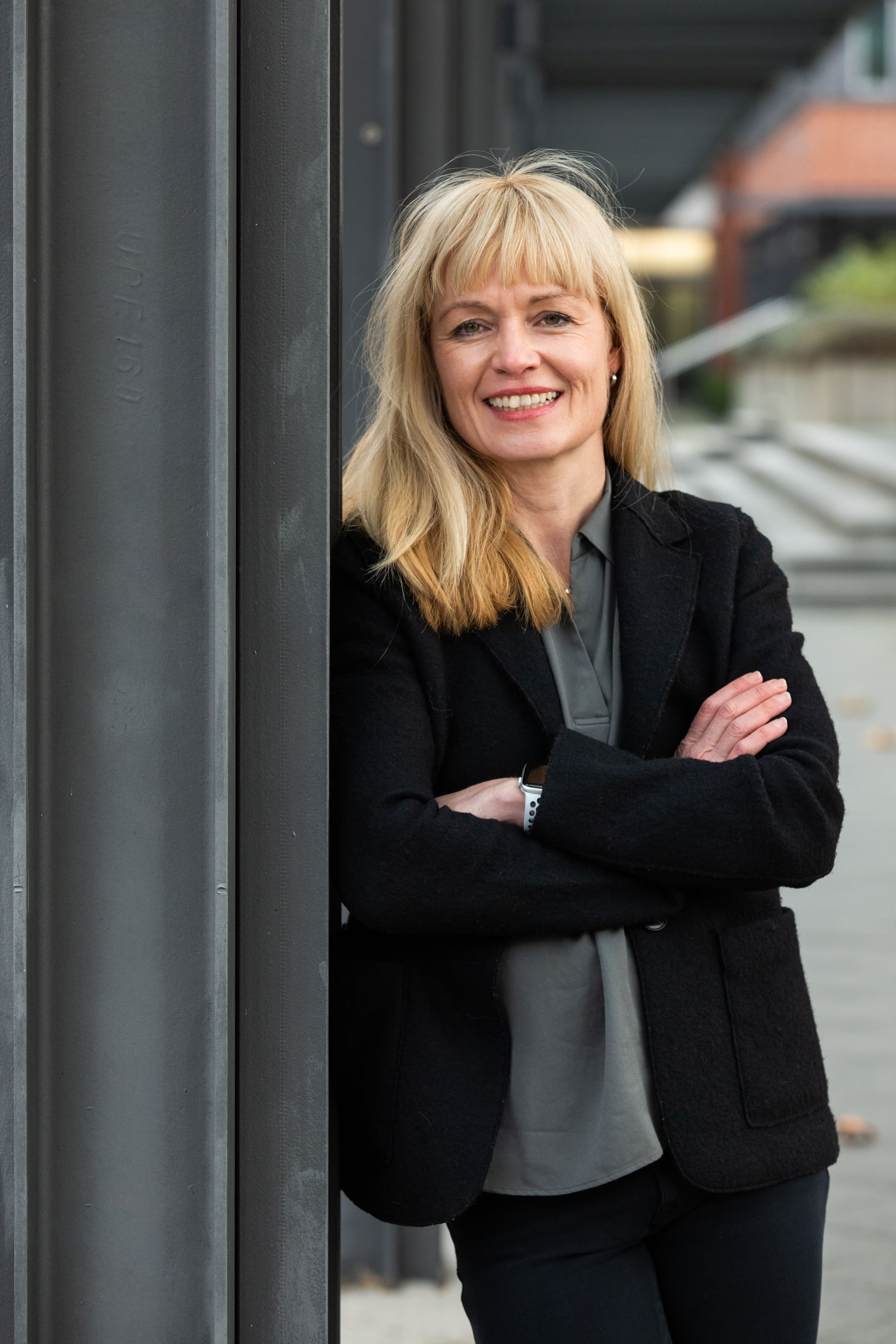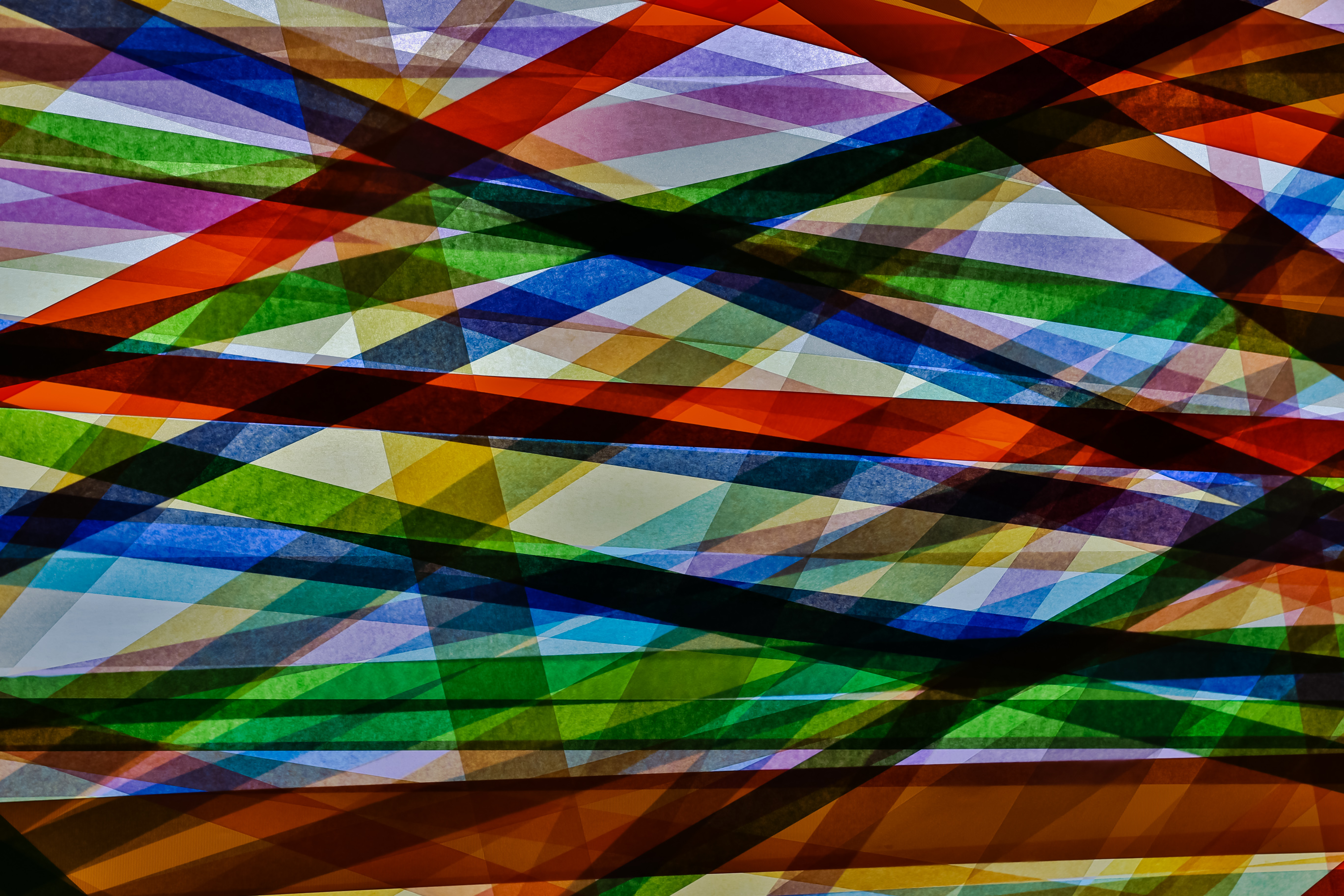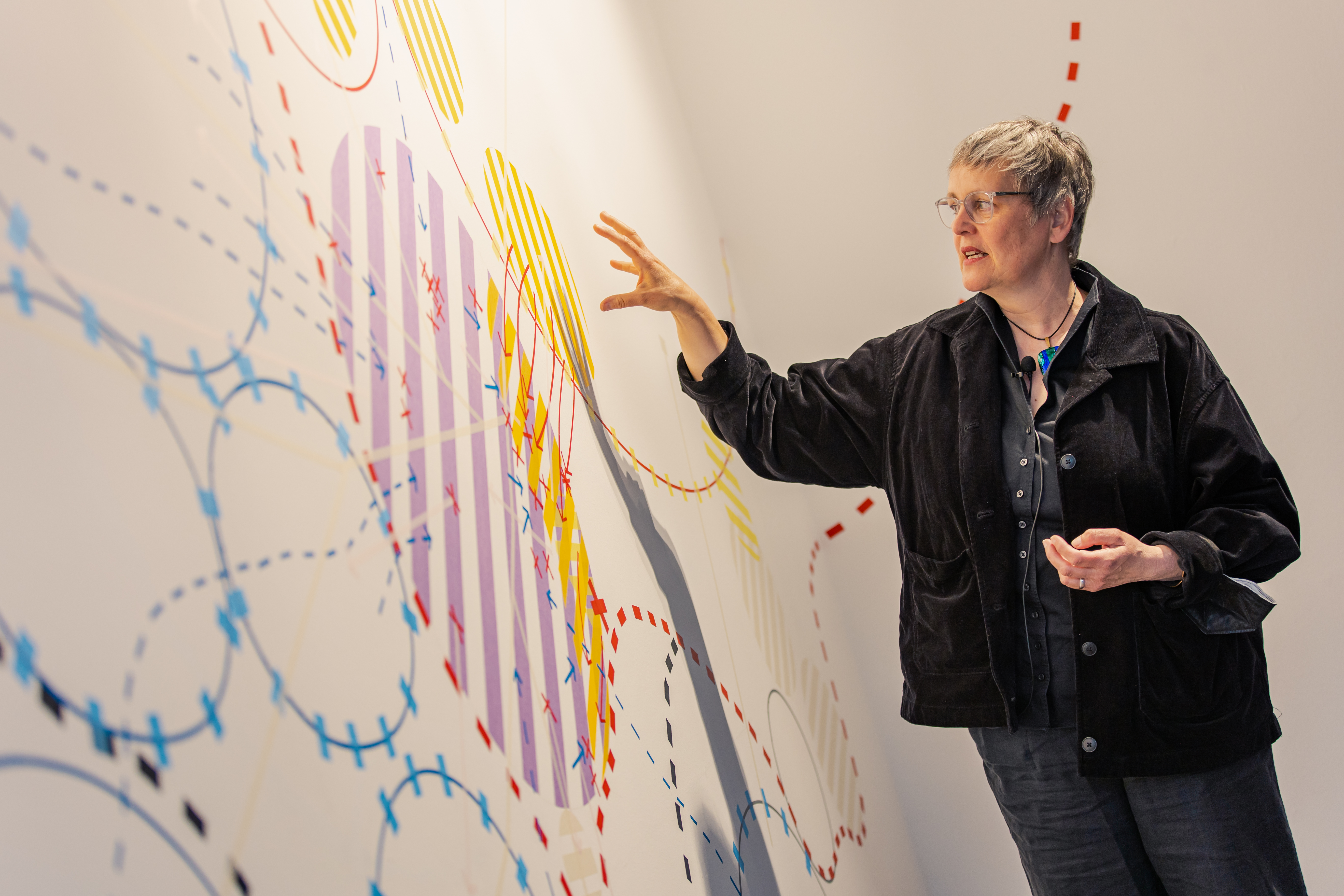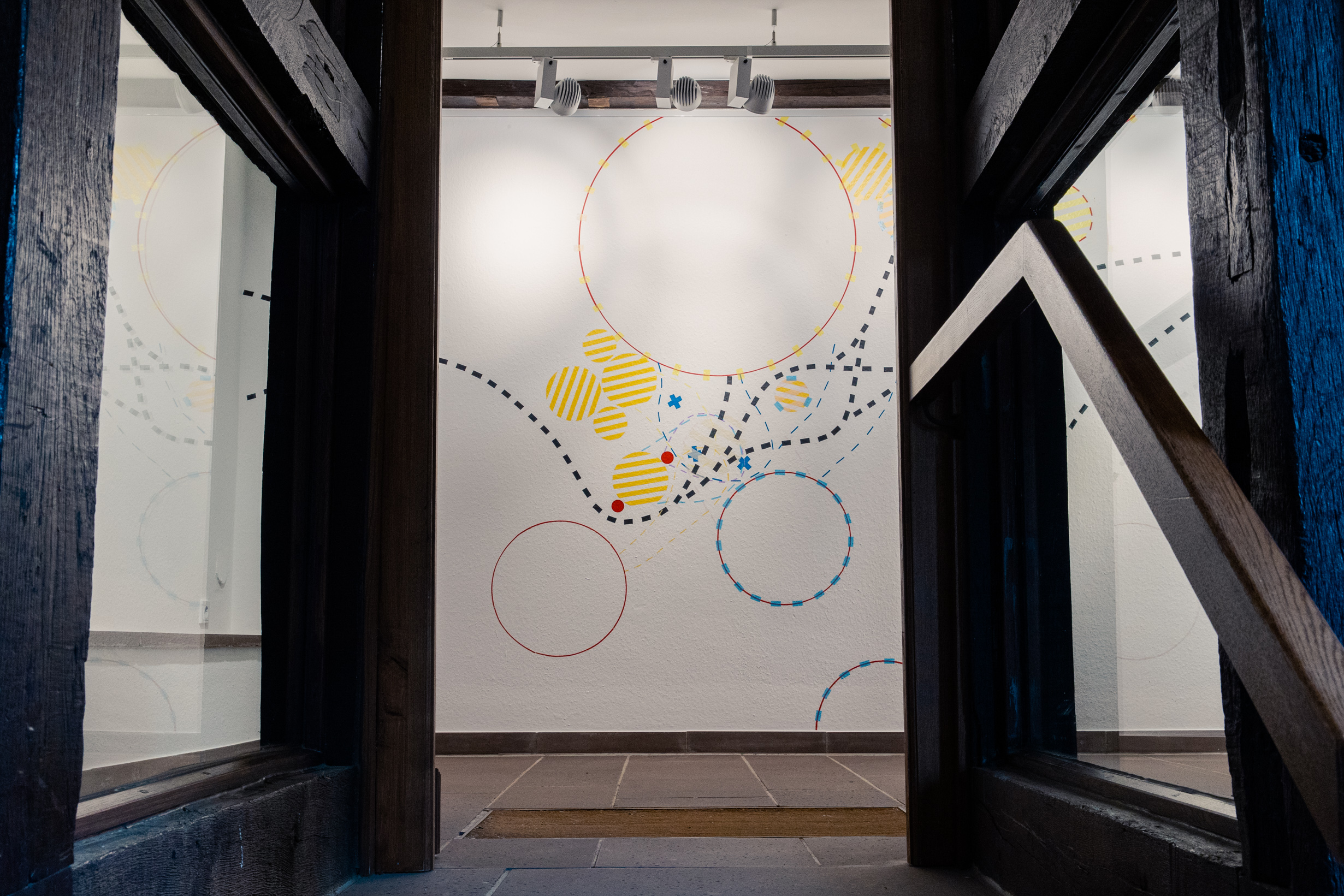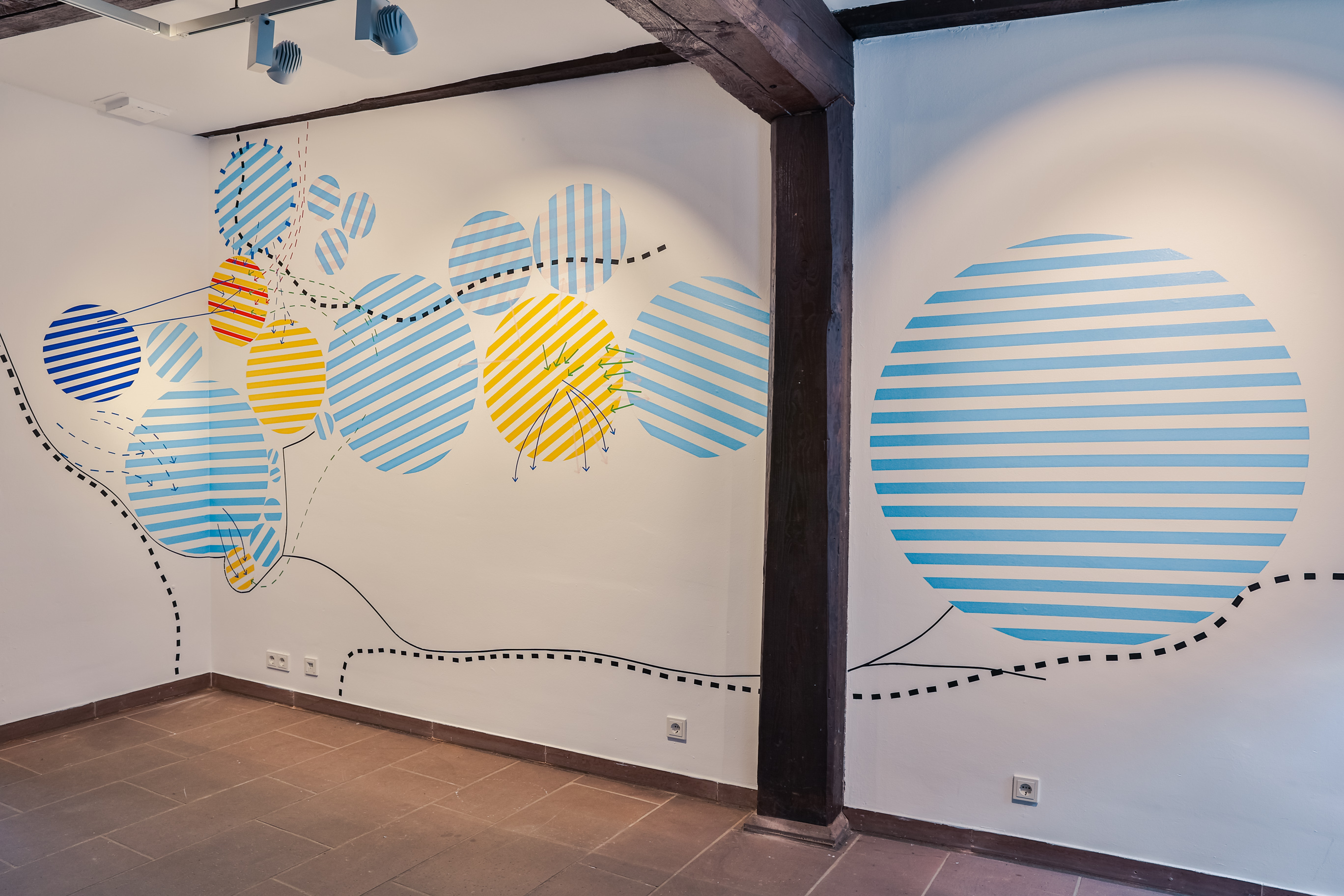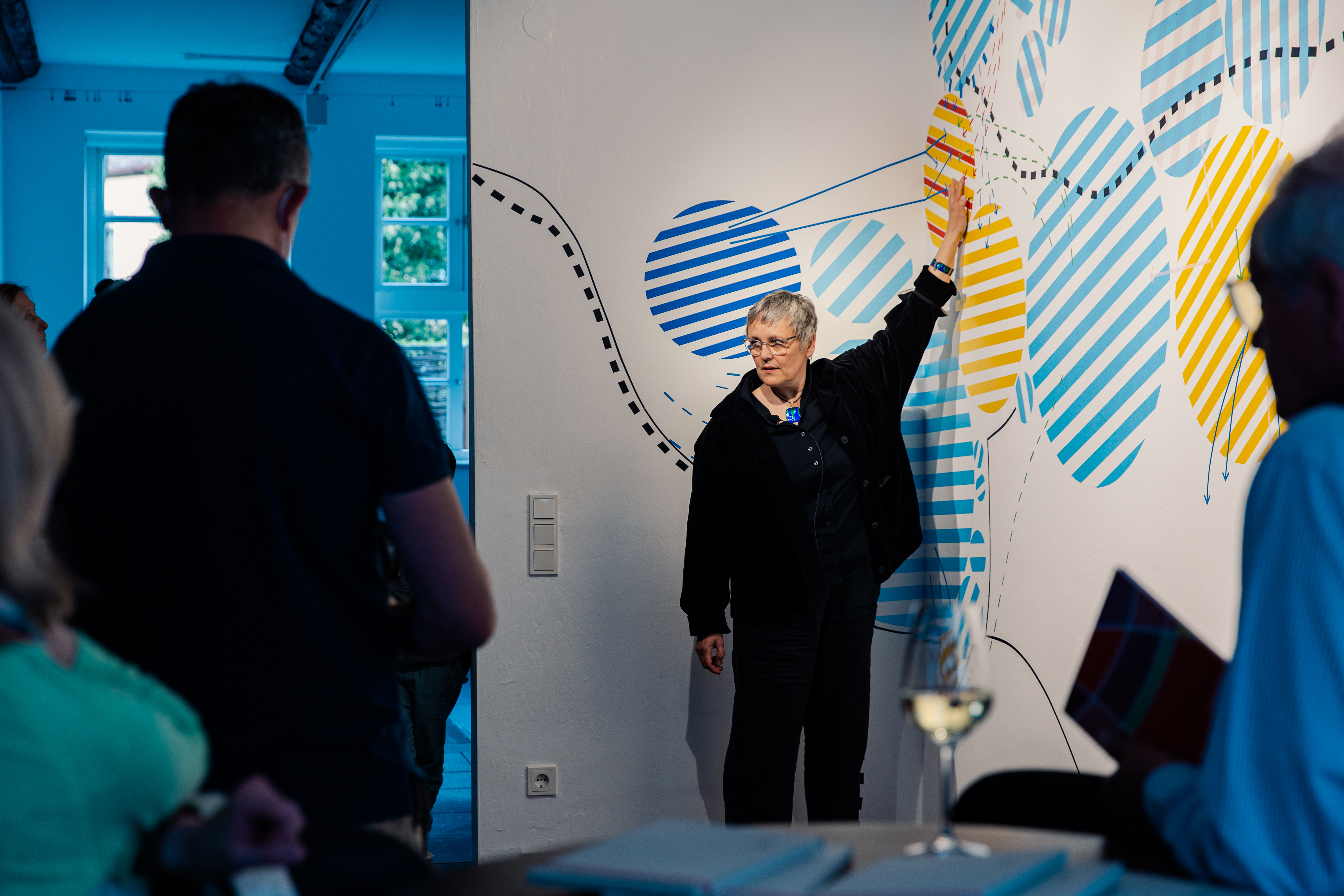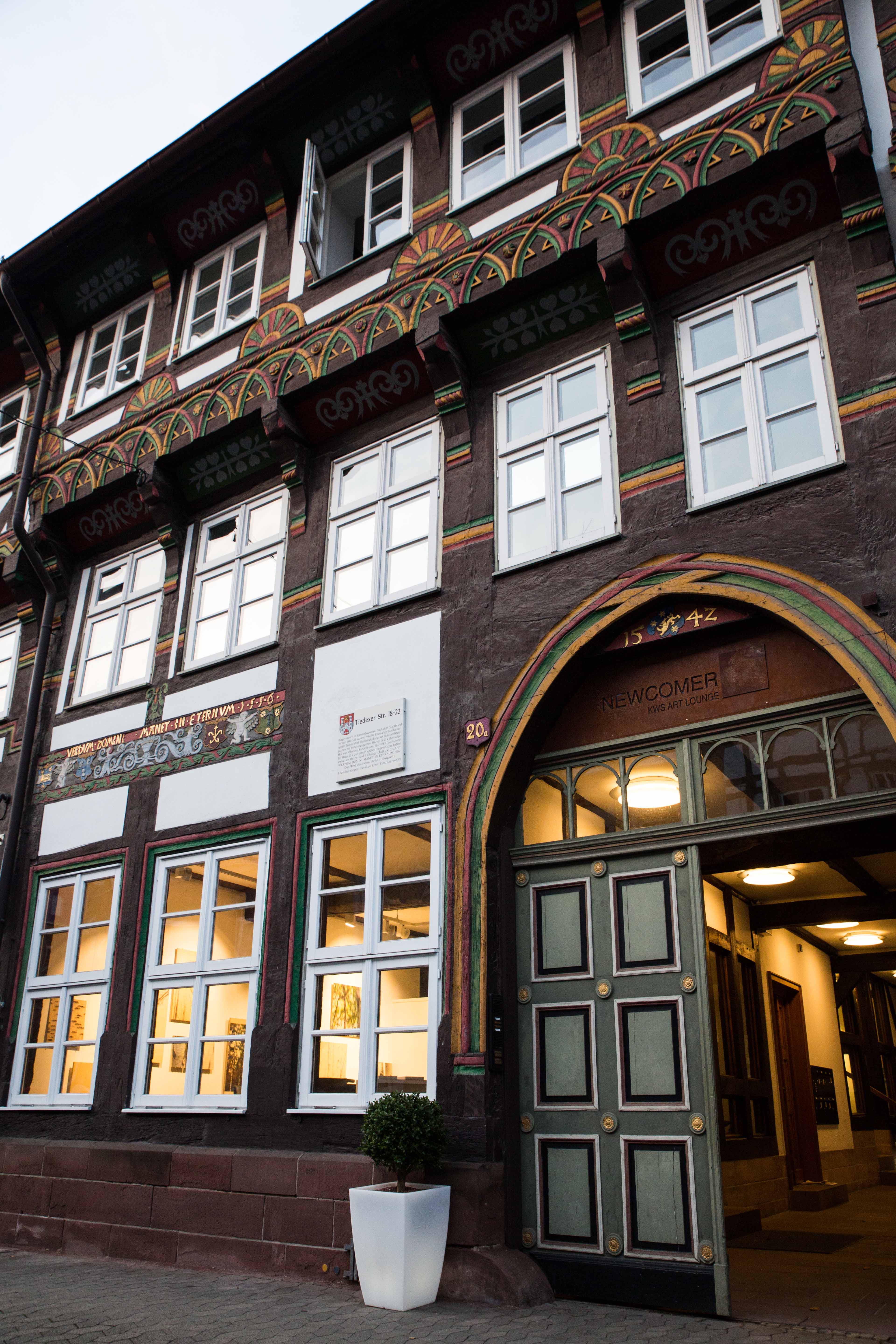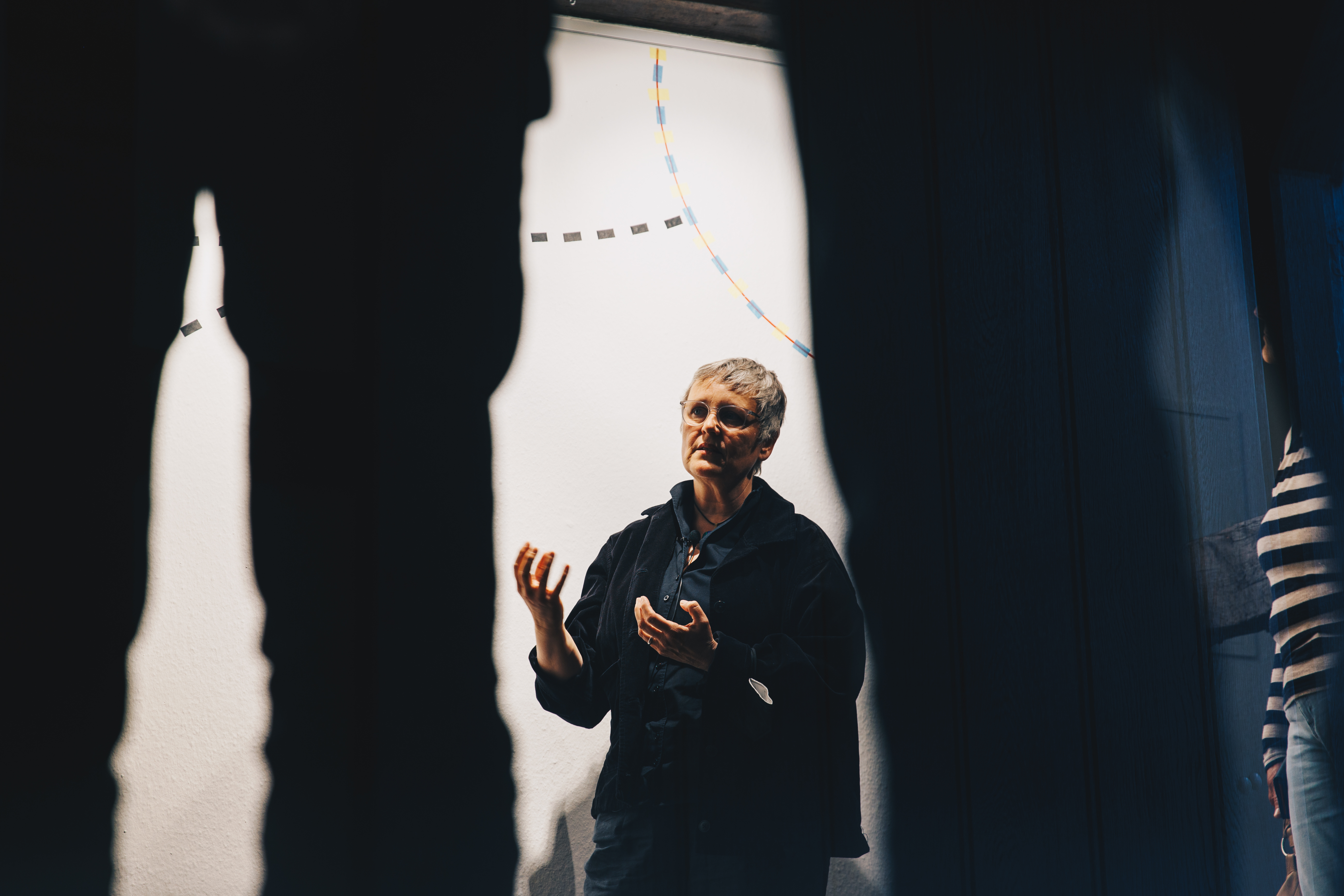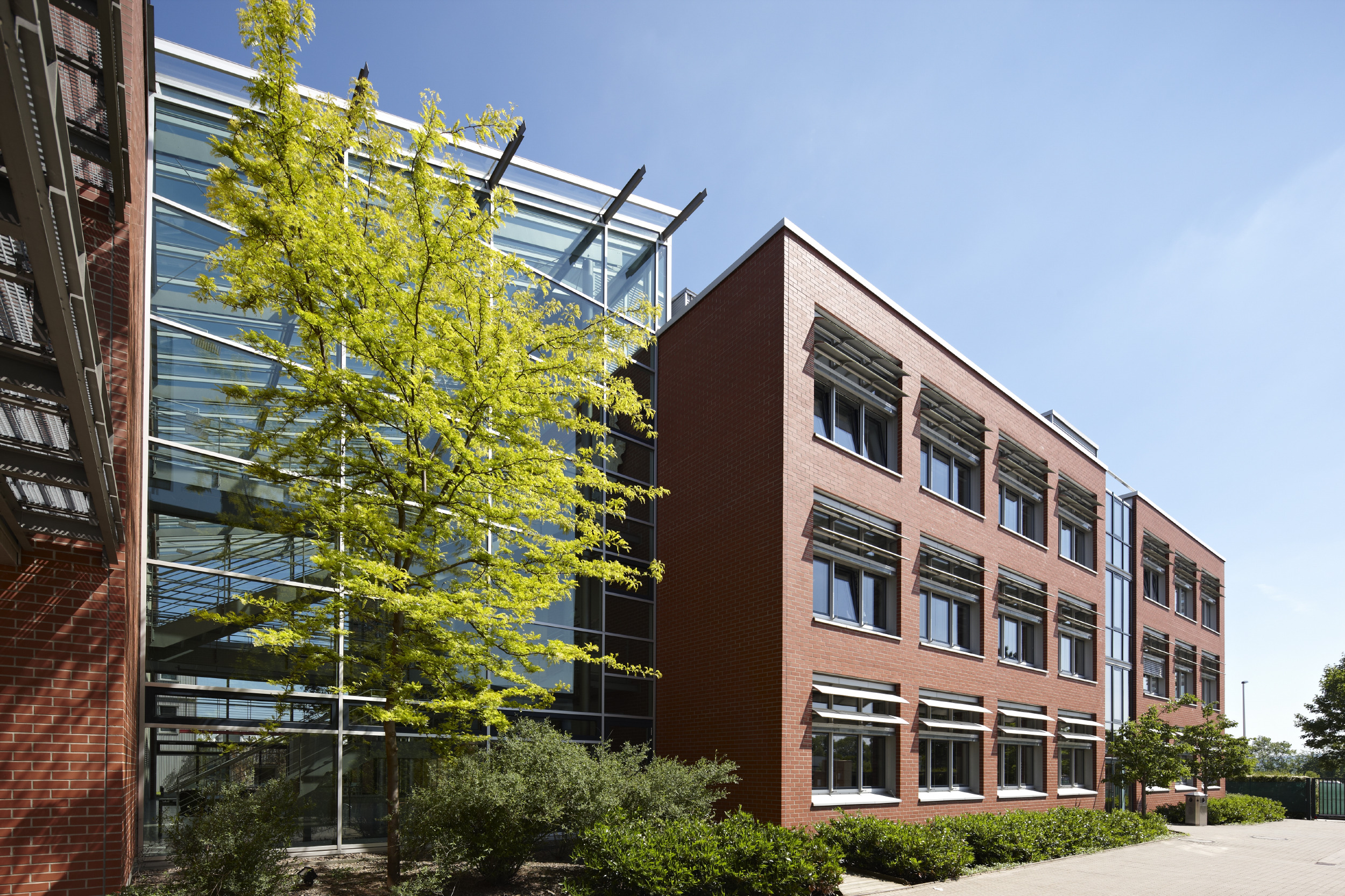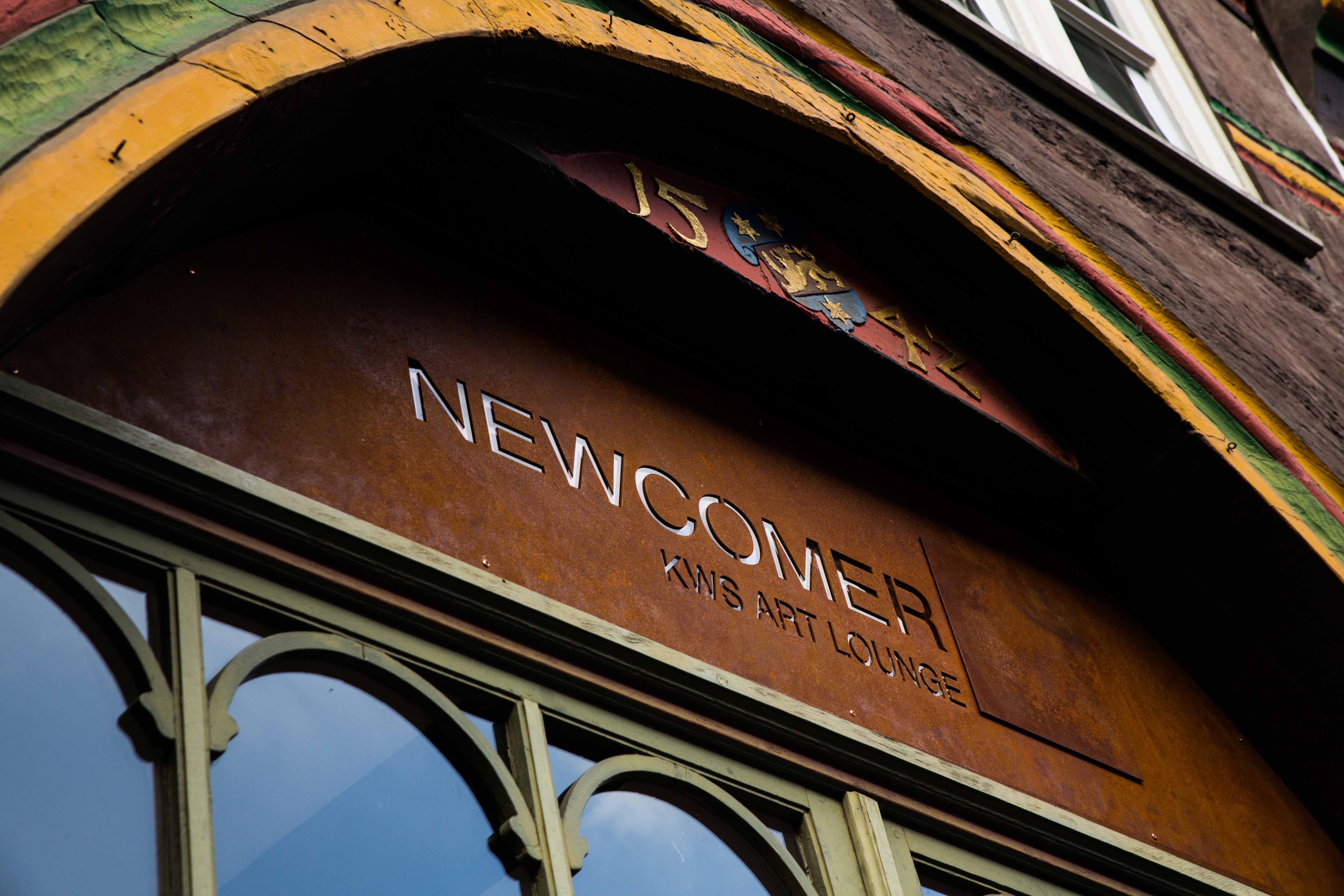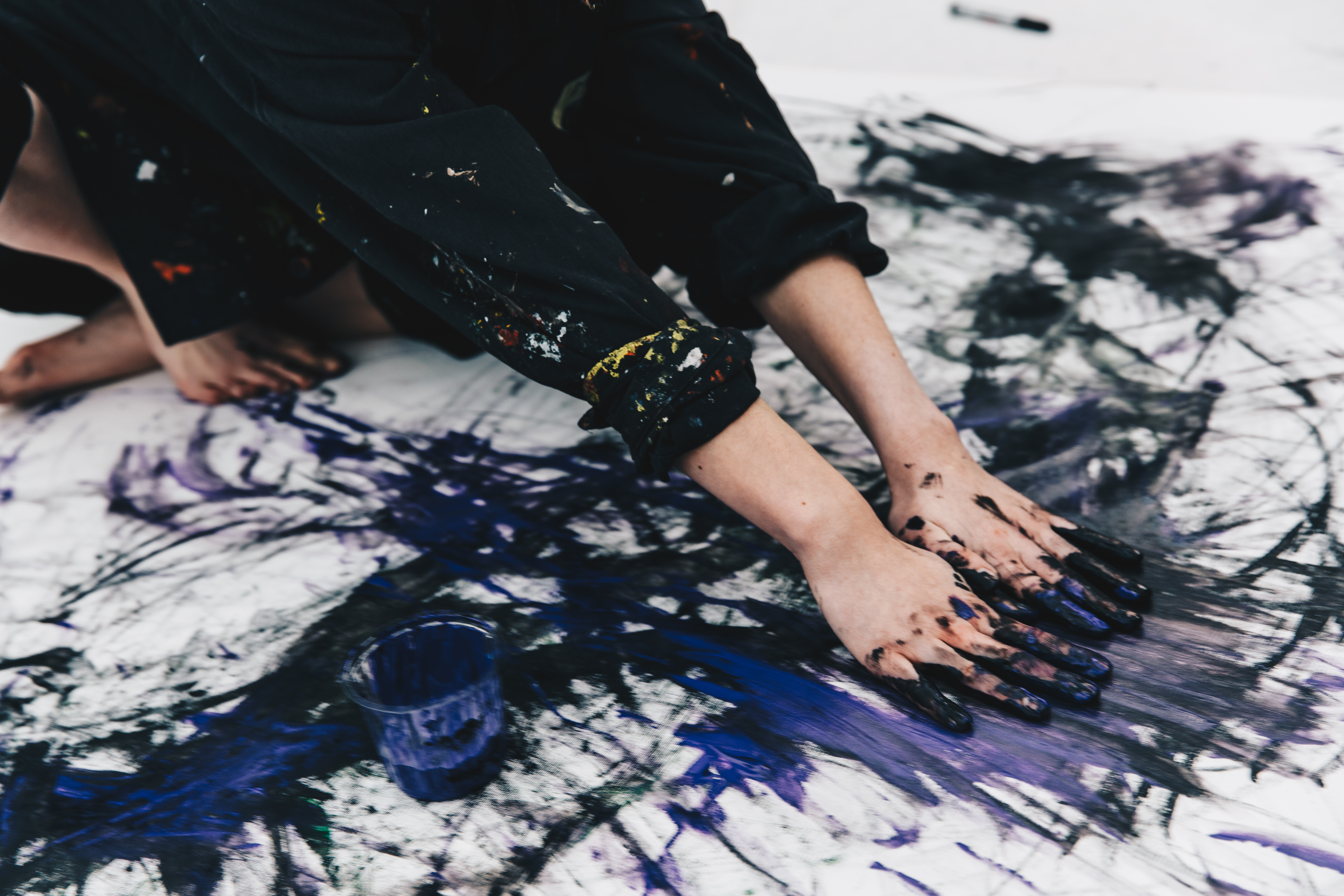Exhibition
Wall drawings – Susanne Fleischhacker
Abstract concrete art in expansive works by artist Susanne Fleischhacker can currently be seen at the KWS Art Lounge NEWCOMER in Tiedexer Straße in Einbeck. The artist from Braunschweig has designed her “wall drawings,” the title of thenew exhibition, using adhesive strips. “Tape Art” is the name of this art form. Using seemingly minimalist means, Susanne Fleischhacker transforms white walls into political maps of theworld using geometric symbols in various colors. The artist gets her inspiration in the abstraction ofread political current events.
Susanne Fleischhacker likes to explain her works, but each viewer should also have the opportunity to engage himself with the maps she has createdon site based on previously developed sketches. Those who merely like to see colored stripes, circles or elipses can do the same in abstract concrete art.
"Fleischhacker shows herself in a singular way as a painter, although she does not paint with brushes and colors on canvas, but with colored adhesive tape from the hardware store, which she applies to the walls of the Einbeck exhibition center. Once again, she combines opposites there: space and painting, whereby the latter takes on installation features, modern painting material and ancient painting ground." – Michael Stoeber
Messages and Narratives
Susanne Fleischhacker's murals in Einbeck also use messages and narratives, but they are not necessarily recognizable at first glance. This fundamentally distinguishes their gesture from propagandistic murals and graffiti. Therefore, independent of what they communicate in terms of content, they can be perceived and understood on a purely aesthetic level. As an assembly of geometric signs that combine to form images of shapes and colors that are as mysterious as they are coherent. Coherent in the sense of aesthetic artifacts! Thus, we see on one of the murals in Einbeck circles of different sizes and colors together with ovals of different colors.
All in all, it reminds us of a topography, of an orientation map, without its meaning becoming immediately apparent. This changes abruptly as soon as one interprets the circles as countries, even if their real proportions are only approximately represented by the various circles.
The seemingly innocent, playful and cheerful mural then becomes a snapshot of a terrible war.
The signature of modern art - asking questions rather than providing answers
[This] rational gesture of fact-oriented objectivity, which determines her tableau, allows us to recognize connections, promotes analysis, and stands out pleasantly from the general, at times insipid, moral indignation about this war. However well-founded it may be, it does not lead us out of this conflict, the resolution of which is tantamount to squaring the circle anyway. Without a compromise of some kind, there will be no end to this devastating war. It is to be hoped that there will be a well-negotiated compromise soon. Prudence and the ability to compromise are also needed in other parts of the world, which Fleischhacker has depicted in two other murals, so that existing wars there can also be ended or smoldering conflicts do not break out in the first place.
The situation in Southeast Asia
One of her tableaus shows Southeast Asia, with the South China Sea at the center, with its abundance of fish, energy resources and regionally and internationally important shipping lanes. In this sea, where it is imperative to ensure global security, the affiliation of many islands is disputed. This has already led to conflicts between China and Vietnam, as well as between China and the Philippines.
Middle East
The Middle East is another crisis region always on the brink of war. As a mural choreographed by Susanne Fleischhacker, it too presents itself as a rather cheerful topography at first glance. Different circles, cross-hatched with friendly blue and yellow stripes, represent once again countries. In one circle (Israel) the stripes are dark blue, in another (Syria) white, yellow and red. The names of these countries alone seem to be synonyms for wars or warlike conflicts. Added to this are the problems in Yemen or in other failed states, as Iraq and Afghanistan are called in the terminology of the West in addition to Yemen and Syria.
Concrete art as a purely aesthetic phenomenon
With [another work] the artist has transformed the Art Lounge of the KWS into a forum for studying varieties of concrete art as purely aesthetic phenomena. In doing so, she has placed colored adhesive strips over two windows, and they lead to very different impressions. Both use the power of light in such a way that one might think one is looking at light boxes.
Silence and storm, calm and dynamism, perhaps also war and peace, stand here side by side and against each other and provide an overall picture full of aesthetic tension. It becomes apparent that even when Susanne Fleischhacker does not narrate, she tells us something.
Without a narrative, this artist will not work.
About the people - Susanne Fleischhacker and Michael Stoeber
Artist: Susanne Fleischhacker
Susanne Fleischhacker studied from 1988 to1996 at the Hochschule für Bildende Kunst (HBK) Braunschweig with Hinnerk Schrader, Malte Sartorius and Lienhard von Monkiewitsch, and from 1990 to 1995 also political science at the Technische Universität Carolo-Wilhelmina zu Braunschweig. She was a master student of Prof. Malte Sartorius. From 2002-2003 she held a teaching position at the HBK Braunschweig. Susanne Fleischhacker has received numerous awards, including the “Window for the Room of Silence”, Amalie Sieveking House of the Diakonie in Wolfenbüttel in 2008. After years with less artistic activity Susanne Fleischhacker, who works inthe administration of the HBK Braunschweig in the department for international relations, shows with the exhibition in Einbeck for the first time again her “Tape Art”.
Art historian and art critic: Michael Stoeber
Michael Stoeber lives and works as an author and curator in Hanover. He studied literature, philosophy and art history in Göttingen, Nice and Hanover. In the eighties he began writing for the tageszeitung and as a radio author for the NDR. Today Stoeber writes regularly for Kunstforum International, EIKON, artist and the Hannoversche Allgemeine Zeitung. He is the author of catalog texts, books and book contributions on contemporary art and photography.
Excerpts from his text for the exhibition were used for this online exhibition.
Discover more
Your contact
